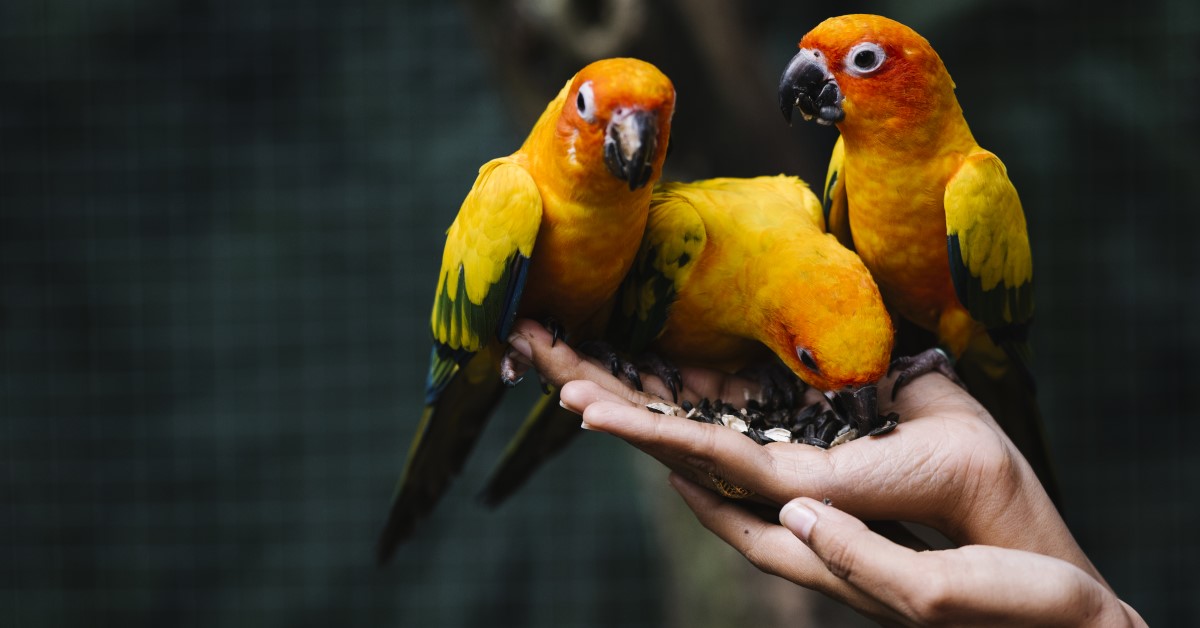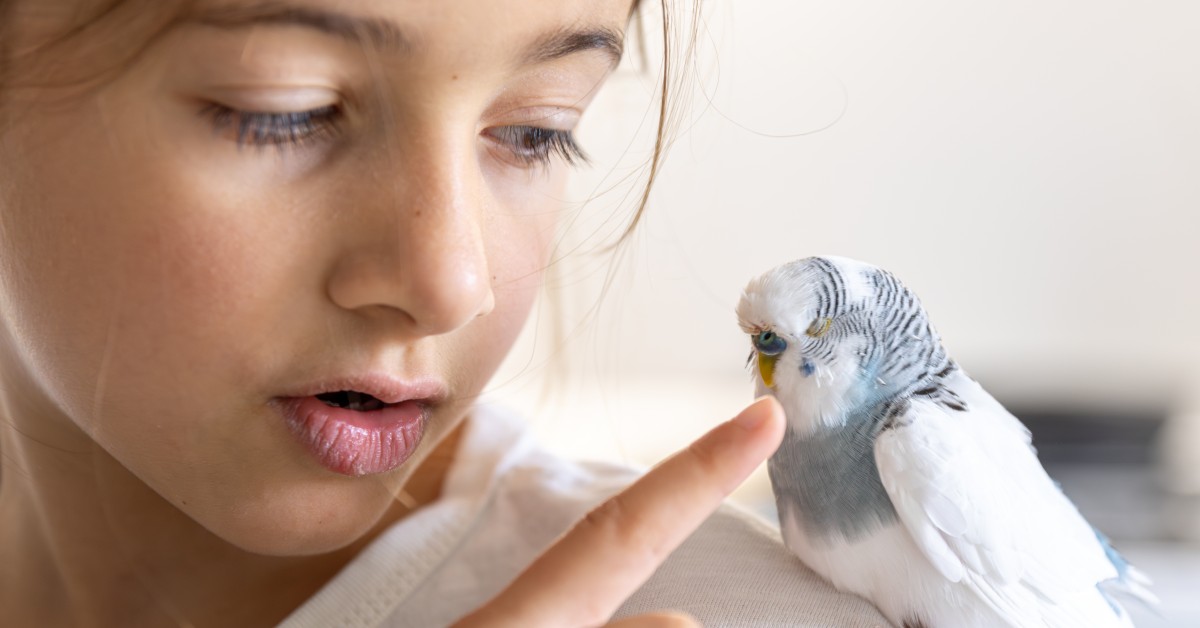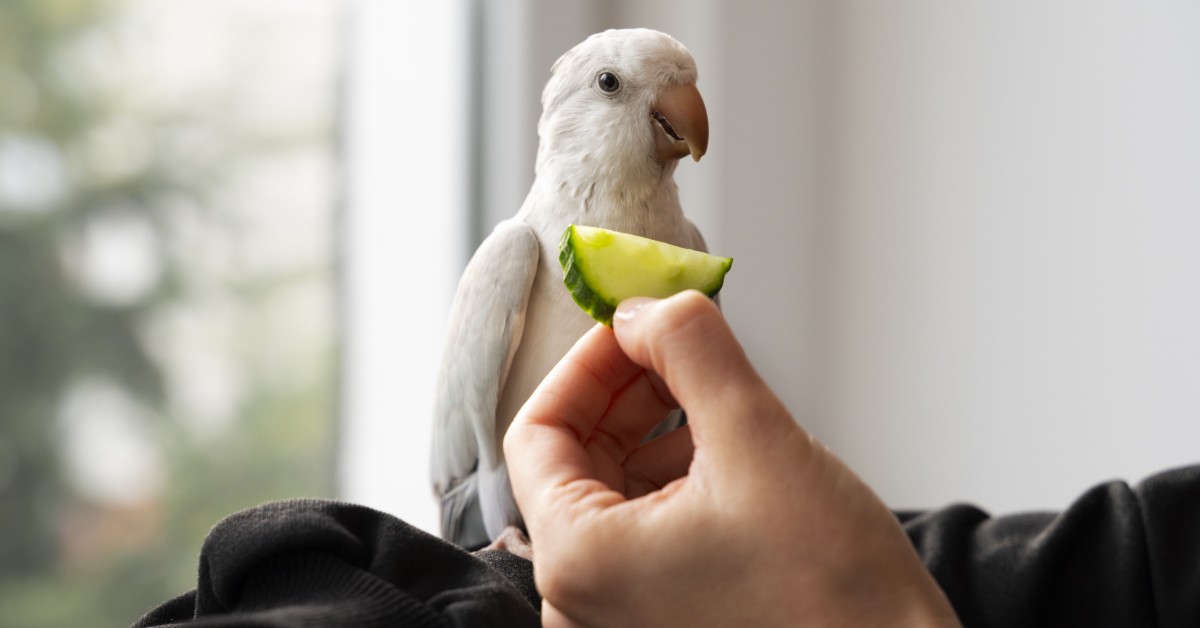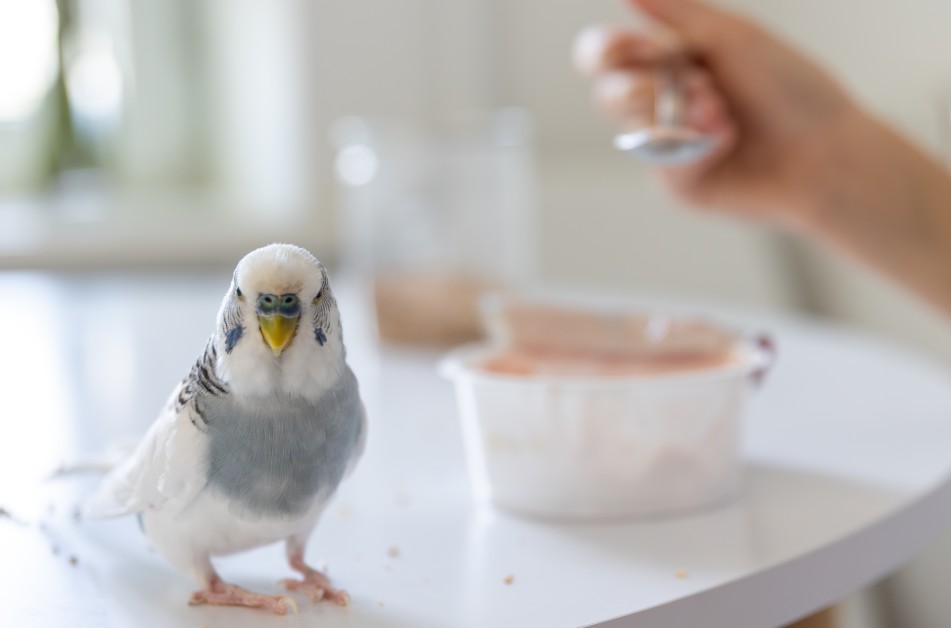How to Bathe a Pet Bird
Birds should be encouraged to bathe often to keep their skin and feathers healthy.

Birds can be great companions for all types of households, including senior citizens, petless households, and homes with children. As birds are intelligent creatures, they are relatively easy to train and full of personality. Caring for pet birds is relatively straightforward. Most varieties of birds only require food, water, a clean cage, and the occasional bath.
Bathing a pet bird is a little different than washing a cat or dog. Birds are small, delicate creatures that must be handled with great care to avoid creating fear and stress. According to VCA Animal Hospitals, birds should be offered a bath daily, although not all birds will choose to bathe daily. If your bird is new to bathing, start by offering baths once or twice a week and gradually work up to offering them every day.
Basic Rules of Bathing a Bird
Bathing a bird doesn’t have to be complicated but there are a few rules you’ll want to follow to keep your pet healthy and happy. These rules apply to all types of pet birds, such as cockatiels, parakeets, conures, parrots, lovebirds, and other feathered friends.
- Only use plain water. It may seem odd but birds do not require any soaps or shampoos to get clean. You may find specialized “bird shampoos” on the market but these are generally unneeded. Birds produce their own special oil that can be easily stripped away with the use of harsh soaps or detergents, resulting in unhealthy feathers. The safest way to bathe your bird is by using plain, clear water.
- Ensure the water is at a comfortable temperature. Avoid using water that is too hot or cold as this can be a shock to the bird’s system. Birds are also at risk for burns and other injuries when the temperature is wrong. Most birds prefer to bathe in lukewarm or room temperature water. Always check the temperature of the water before allowing your bird to bathe.
- Bathe your bird when it’s warm. Birds can easily catch a chill, especially in the cooler months of the year. Prolonged exposure to cold can cause adverse health effects for your pet. Ideally, you want to bathe your bird when it’s the warmest, usually in the early afternoon when the temperature seems to peak.
- Don’t saturate the feathers. While it may make sense to get your bird completely wet to achieve a deep clean, this should be avoided. You never want to saturate your bird’s feathers as soaking can lead to loss of body heat and the inability to take flight. With the exception of extreme circumstances where the bird requires a more thorough cleaning, avoid saturating your pet’s feathers.
Ways to Give a Bird a Bath
When it comes to giving birds a bath, you have several options you can try. Just like any other animal, not all birds are the same and some may prefer certain methods over others. It is important to form a bond with your bird so that you can better gauge what makes your bird feel comfortable and what causes it stress. Some of the most common techniques used to bathe birds include:
Offer a Fine Mist
One of the easiest ways to help your bird bathe is by spritzing it with a fine mist. Most birds originate from warm climates where they would naturally take in moisture due to humid conditions. You can help recreate this by spritzing your pet bird with a fine mist from a clean spray bottle.
The mist can help clean the feathers and rehydrate the nasal cavities without getting your bird too wet. Remember to only use clean, clear water in the spray bottle at a comfortable temperature. Avoid any chemical residues that could harm your pet.
Shower Together
Another popular way to bathe pet birds is to step into the shower together. Birds are naturally social creatures and enjoy spending time with their humans. While you don’t want to put your bird directly under the spray of water, you can place it on a special shower perch, a shower railing, or even on the bottom of the tub where it can enjoy the mist and moisture.
Create a Pool in the Sink
Letting your bird bathe in the sink allows your pet to gradually get used to bathing in a way that doesn’t stress it out too much. Put just a small amount of lukewarm, clean water on the bottom of the sink and have your bird step down into the pool. Many birds will naturally begin bathing or splashing around.
Some birds enjoy a small stream of water that you can create from the faucet. Frequently check the temperature of the water and ensure that it does not fill up the sink too much to avoid saturation.
Provide Wet Lettuce
A pool of water can be intimidating to some birds. If your pet is hesitant about going in the water, start smaller by providing large, wet lettuce leaves. Place the wet leaves of kale, swiss chard, or other produce on a plate on the enclosure’s floor and allow your pet bird to experiment on its own.
Like many other types of pets, birds enjoy a steady grooming routine that involves frequent baths. It can take time to get your bird accustomed to getting these baths but the results are well worth the effort. Frequent bathing will help keep your pet bird happy, healthy, and looking its best.
Ready to start saving money on pet wellness care?
Then take a look at Mint Wellness, the pet wellness plan that provides fast reimbursement on routine pet care. Save on vaccinations, wellness exams, preventatives, dental, and more!
Learn More


